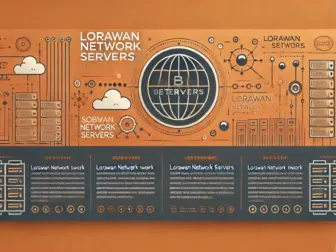Tag - LoRaWAN gateways
Exploring LoRaWAN Gateways: The Backbone of IoT Networks
LoRaWAN gateways play a crucial role in enabling long-range, low-power communication for IoT devices. These gateways serve as the bridge between the end-devices and the network server, allowing for seamless connectivity and data transmission. In this article, we will delve into the intricacies of LoRaWAN gateways, their key features, and their significance in building robust IoT networks.
At its core, a LoRaWAN gateway is a device that receives data from LoRa-enabled sensors and transmits it to the network server via a wired or wireless connection. The gateway acts as a central hub for communication, collecting data from multiple sensors spread across a wide area and relaying it to the cloud for processing and analysis. This enables real-time monitoring, control, and management of IoT devices and applications.
One of the key features of LoRaWAN gateways is their long-range communication capability. LoRa technology utilizes spread spectrum modulation to achieve communication over distances of several kilometers in urban environments and up to tens of kilometers in rural settings. This extended range makes LoRaWAN gateways ideal for applications that require connectivity over large geographical areas, such as smart agriculture, asset tracking, and smart city deployments.
Another important aspect of LoRaWAN gateways is their low-power consumption, which is essential for battery-operated IoT devices. By using a combination of efficient communication protocols and power-saving modes, LoRaWAN gateways can minimize energy consumption and extend the battery life of connected devices. This makes them well-suited for applications that require long-term, maintenance-free operation, such as environmental monitoring and smart metering.
Furthermore, LoRaWAN gateways support bi-directional communication, enabling not only the transmission of data from sensors to the network server but also the reception of commands and control messages from the server to the end-devices. This bidirectional communication capability allows for remote configuration, firmware updates, and troubleshooting of IoT devices, enhancing their flexibility and scalability.
In terms of deployment, LoRaWAN gateways can be deployed in various configurations to suit different use cases and environments. Single-channel gateways are cost-effective solutions for small-scale deployments, while multi-channel gateways offer increased capacity and coverage for larger networks. In addition, outdoor gateways with weatherproof enclosures are suitable for harsh outdoor environments, while indoor gateways can be installed in buildings and facilities for seamless indoor coverage.
Overall, LoRaWAN gateways serve as the backbone of IoT networks, providing the essential connectivity and infrastructure for deploying and managing IoT solutions. With their long-range communication, low-power consumption, bi-directional communication, and flexible deployment options, LoRaWAN gateways are instrumental in enabling a wide range of IoT applications across industries. By understanding the capabilities and benefits of LoRaWAN gateways, organizations can leverage this technology to build scalable, reliable, and efficient IoT networks.
